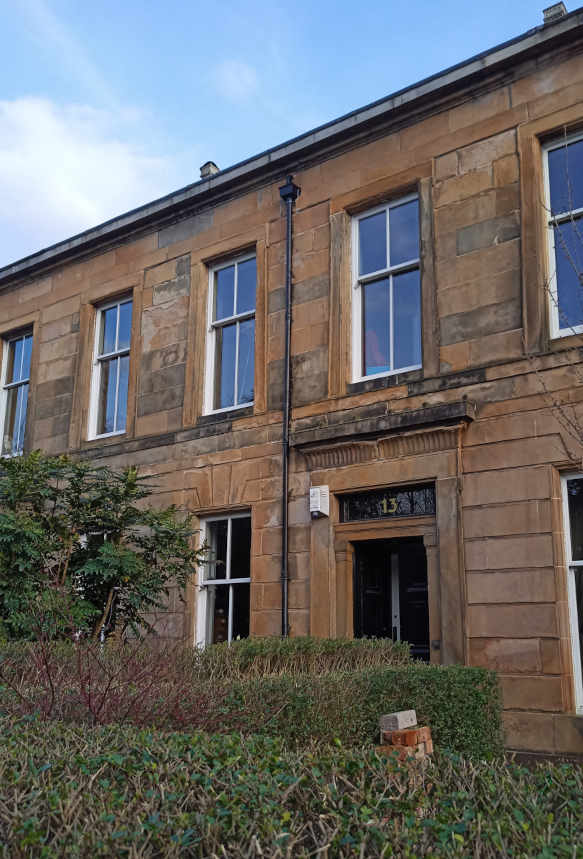11-17 Moray Place was the second terrace constructed along Moray Place, and said to be a poorer imitation of Greek Thomson’s style for the first, though its architect is unknown. It was completed soon after the first terrace however, within a year of 1-10.
No 13 was taken by William Stevenson, the 35 year old quarrymaster of Baird & Stevenson. It was Stevenson, with John McIntyre the builder, who had purchased the land of Strathbungo from Sir John Maxwell and began the development of the area.
The house remained in the Stevenson family for the next 60 years, and this article largely concerns the dynasty built by William Stevenson and his sons.
Many are aware of the two-tone nature of Glasgow’s buildings – blond sandstone in the 19th century, increasingly replaced by red sandstone in the 20th, allowing buildings to be roughly dated before or after the 1890s. However few are aware that, blond or red, the odds were the stone was supplied by the Stevensons. No one person can claim to have made a greater mark on Victorian Glasgow’s architecture and appearance than William Stevenson; Glasgow University, the City Chambers, Kelvingrove Art Gallery and countless others were built from Baird & Stevenson stone. Yet apart from a brief contemporary obituary in the Barrhead Times, virtually nothing has been written about William Stevenson, and he seems completely forgotten. So here is his story.


Recent Comments